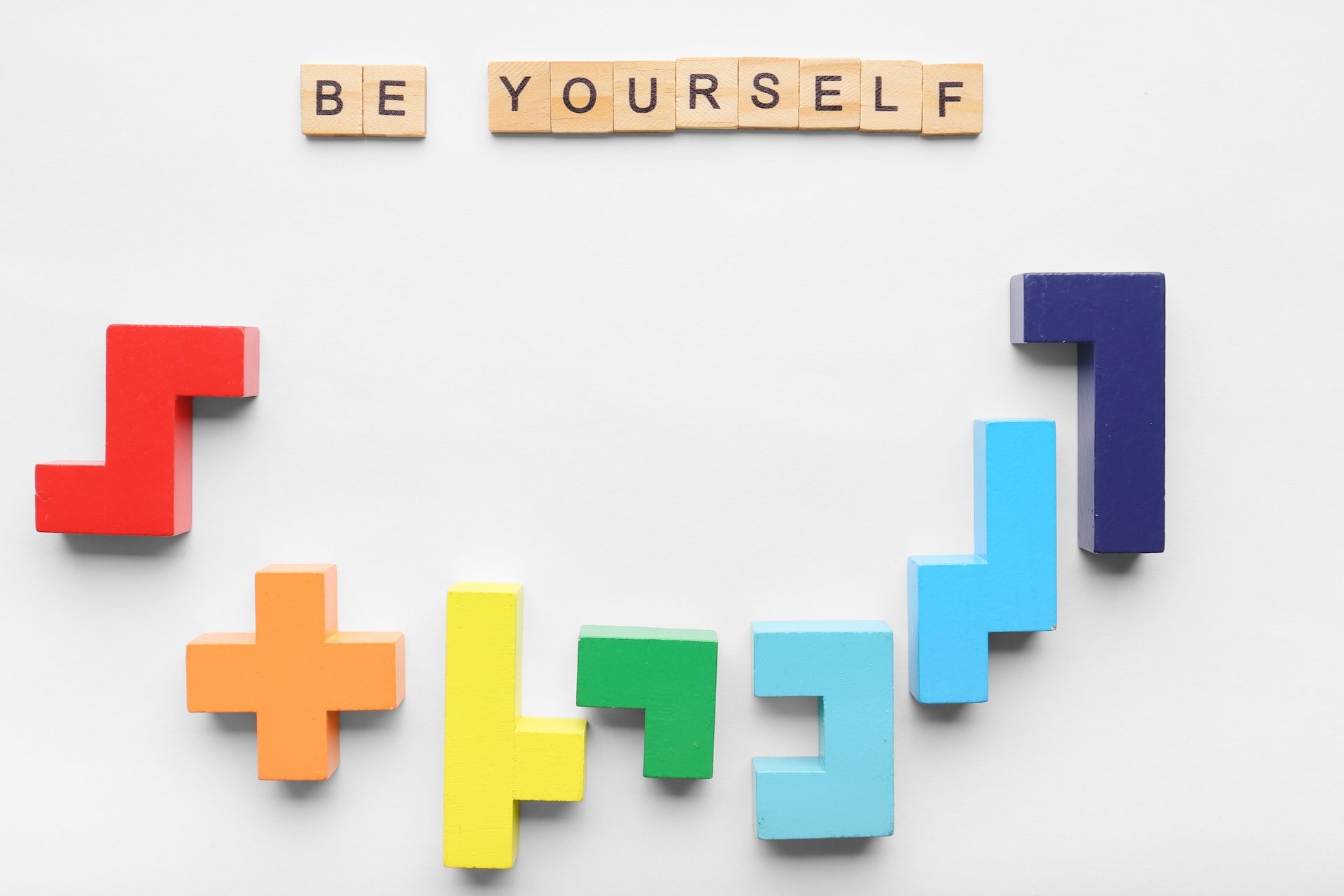
Explore your personal space, where, when and how you feel safe.
Disruptors
Internal and external, gaps, excesses and technology
Internal / External
Several factors, both internal and external, can contribute to the loss or disruption of personal safe spaces. Here are some common factors that can affect the sense of personal safety and security:
Internal Factors:
1) Self-doubt and Self-criticism: Constantly doubting one’s ability and judging self leads to a toxic safe space filled with negativity and pessimism. Self-doubt, self-criticism, and negative self-perception gives rise to the feelings of insecurity and invalidation with regards to their own thoughts and emotions.
2) Trauma and past experiences: Past traumas of an individual like that of mental and emotional abuse, harassment and emotional distress can have an adverse effect on the personal safe space of an individual. The impact of previous traumatic experiences can create internal triggers and emotional wounds which makes it challenging to create a personal safe space.
3) Mental health challenges: Various mental health conditions like anxiety disorders,depression,post-traumatic stress disorders and likewise can disrupt one’s perspective of a safe space. These disorders can invite the feelings of fear, vulnerability and agitation which becomes an obstacle in creating and maintaining a personal safe space.
4) Lack of self-care: Compromising with one’s self-care practices such as exercise, proper rest, nourishment, and relaxation can add to the feelings of stress, exhaustion and burn out, thus hindering the creation of a personal safe space. The negative feelings as a result of neglecting one’s physical and emotional needs gives rise to the feeling of diminished sense of well-being, thus, making it challenging to establish a personal safe space.
The reduced attention span, often attributed to the rapid advancements in technology and the digital age, can indeed have adverse effects on our relationship with personal safe spaces. Here are a few ways in which it can impact our connection with personal safe spaces:
1) Distractions and fragmentation: The world of today is filled with distractions which prohibits individuals to fully involve themselves and engage with their personal safe spaces. Increase in screen time, constant notifications, social media feeds and the need for instant gratification gives rise to lack of focus and a shorter attention span which hinder individuals to nourish their personal safe space.
2) Difficulty in Sustaining Solitude: A personal safe space requires solitude and alone time for the purpose of reflection and self-discovery. However, to sit in silence and contemplate without seeking external stimuli has become a task in itself. The constant need to be engaged with something or other has made it difficult to appreciate the importance of solitude, calm and quiet moments.
3) Superficial Engagement: Tendency to look out for quick and superficial interactions because of shorter attention spans hinders the process of having deep and meaningful communication. When individuals fail to contribute enough time to deep conversations or reflections, it leads to failure in making the most of the personal safe spaces that demand an individual’s sustained attention and investment.
4) Neglecting Boundaries and Balance: Setting healthy boundaries and distancing oneself from the world outside helps creating a personal safe space. Shorter attention spans lead to not maintaining those boundaries and give in to the urge of engulfing oneself with people or receiving information which ultimately pollutes the very essence of personal safe spaces.
To mitigate these challenges, it’s important to be mindful of our technology usage, practise digital detoxes, and cultivate habits that allow us to regain focus and attention. Setting aside dedicated time for personal safe spaces, such as mindfulness practices, journaling, or engaging in hobbies, can help counterbalance the impact of a reduced attention span. Creating physical spaces conducive to concentration and minimizing distractions can also support our ability to establish and maintain personal psychological safe spaces.
External Factors:
1) Toxic relationships or environments: Being in toxic relationships or a draining environment devoid of respect, empathy or understanding gives rise to personal safe spaces with a lack of sense of safety and acceptance. Verbal, emotional or physical abuse, bullying and discrimination may threaten the sense of safety of an individual, discouraging them to share their thoughts openly.
2) Social pressure and societal norms: One of the major pressures is brought about by societal pressure which requires one to conform to certain expectations or norms. Fear of judgement, rejection or shame may result in denial of feelings, opinions, emotions and identities of people making it nearly impossible for them to maintain a calm and secure personal safe space for themselves.
3) Online harassment and cyberbullying: . Technological advances have presented new threats to safe zones with the surge in online harassment and cyberbullying. The internet’s involvement in one’s lives have opened doors for an invasion of both mental and physical private spaces. Cyberbullying, online harassment and people invading the privacy of others can ultimately contribute to turning the online environment into a hostile one with feelings of discomfort and fear revolving around constantly.
4) Environmental instability: One’s physical environment becoming unsafe or filled with instability due to factors like crime or frequent interruptions affecting their sense of well-being threatens one’s security. The concern for themselves and their well-being causes one not to experience the sense of inner security and thus fail in creating a personal safe space for an individual.
Acknowledge the above factors and direct attempts to redesign or re-establish the personal zone of import. Along with initiating a therapy plan, people can learn how to respect one another through learning how to set limits. Who is up for sharing or communicating at the right times and who can offer support are some of the things that one can do to get their personal safe spaces back and maintain peaceful living.
To ensure a healthy and safe interpersonal atmosphere, one’s actions and those around him/ her can either help or hinder the process. Scroll down to learn more such examples.
1) Lack of respect for boundaries: Hurting or disrespecting someone’s feelings in their personal safe space can undermine their safe space. This may entail breaching the confidentiality of an individual, dismissing their requests or consent, forcing them to share some personal information or participate in certain activities which makes them uncomfortable.
2) Judgement and criticism: When individuals think they are scorned for their expression of ideas, feelings, or identities, their confidence and hence safety is undermined. Severe criticism, being laughed at or a constant negative attitude creates an unsafe environment that discourages individuals to express their authentic selves.
3) Verbal or physical aggression: Aggressive behaviours such as yelling, threatening and physical violence directly interfere with personal safe spaces. These actions can result in feelings of distress, harm and anxiety which leads to lack of safety and security.
4) Bullying and harassment: Both bullying and harassment disrupts one personal safe space adversely. Cyberbullying, slandering, doxing or likewise can cause a negative, unsafe and hostile atmosphere leading to the harm of the mental and emotional well-being of a person, thus pushing him towards isolation.
5) Discrimination and prejudice: Discrimination on the basis of race, gender, sexual orientation, religion or disability can result in negative and unpleasant situations. Unfair treatment, the use of derogatory terms against individuals or the acts of exclusion based on these markers creates havoc in one’s personal safe spaces, ultimately giving rise to ostracization or stigmatisation.
6) Gaslighting and invalidation: Gaslighting, as a deliberate form of manipulation, distorts an individual’s perception of reality which leads them to doubt their own experiences, judgements or sanity. Besides, harmful behaviours like invalidating someone’s emotions, dismissing their worries or not believing their experiences inflicts harm on their emotional being and their sense of safety.
7) Betrayal of trust: Not having a personal safe space has a direct correlation with actions that violate one’s trust whether it is through deceit, betrayal or breach of confidentiality. By showing themselves as honest and transparent, people earn and preserve trust in relationships. Together with safety, trust serves as the foundation of personal safe space. Failure in building the trust of the individuals creates difficulty in recreating a safe space.
8) Spreading rumours or personal information without consent: Personal safe spaces are violated when private information is spilt or rumours are spread out without an individual’s awareness. Such invasion of privacy without one’s consent can lead to feelings of vulnerability and frustration within their personal safe space.
Gap/Lack

Among the main obstacles to the development of a secure environment are that, despite the efforts of online and offline networks, the constant occurrence of abuse, toxicity and destructive behaviours is still there. Attending this problem necessitates individual sensitivity and joint actions. These are some of the areas that need to be responded to in our journey to safer spaces:
1) Robust Moderation and Enforcement: Essentially, almost all platforms prepare moderation policies, yet the effectiveness and uniformity of the same differs. More severe and proactive moderation measures are required to quickly identify and mitigate the issues related with harmful behaviour, hate speech, harassment and other forms of toxicity. This involves activating a legislative reporting system and financing various moderation resources.
2) Education on Digital Citizenship: Valuing digital literacy and conducting oneself appropriately on the internet is significant. Educational campaigns should promote the significance of empathy, respectful communication, and understanding in online spaces. Motivating each individual to be a responsible digital citizen, a healthier and positive environment with limited harmful behaviours is created.
3) Addressing Algorithmic Biases: Social media and online communities may abuse algorithms, disseminating negative information and transmitting divisive narratives that lead to the disruption of a healthy discourse. Ensuring fairness in algorithmic procedures and preventing the propagation of harmful and discriminatory content is essential.
4) Enhancing Privacy and Data Protection: Safeguarding privacy and data protection is integral to the creation of safe spaces. Protecting the user’s personal information and granting transparency in privacy policies should be prioritized by social media platforms and organizations. Making strict security measures, security configurations and care in the handling of personal information are the best ways to stave off abuse and prevent harm to the members of the society.
5) Cultivating Empathy and Respect: The creation of empathetic and respectful culture is the bedrock of safe spaces, both online and offline. Continuous efforts to foster meaningful communication, bring in unity and encourage understanding aids in building a safe space. Actions of an individual or an organization as a whole towards promoting inclusivity, diversity and tolerance helps establish a comforting and safe environment.
6) Collaboration and partnership: Collaboration between various stakeholders, organizations, platform providers, policymakers, and individuals assists in approaching the problems that might obstruct the creation and maintenance of a safe space. Unity among organizations and platforms, exchanging ideas and collectively addressing the obstacles helps in creating a safe space effortlessly and efficiently.
It cannot be overstated that developing safe spaces is an uninterrupted and multitasking procedure involving multifunctional approaches. This is a matter of qualitative research that is done the day after the operation to find out how people viewed it, and it is indeed a blasting way of increasing the future life quality of the society. The work of inclusion is not easy, it can be scary and there can be fears and uncertainties. It really requires consciousness, respect, responsibility and communication.
When something or someone threatens your personal safe space, it’s important to take steps to protect and maintain the integrity of that space. Here are some strategies to handle such situations:
It is very important to take steps to protect and save the importance of that space. Here are some strategies to handle such situations
1. Recognize the threat: One should be aware and clear about the specific things that are challenging their personal safe space. An individual should figure out the behaviours, actions, or situations that cause distress in them or may undermine their sense of well-being.
2. Set boundaries: An individual should make sure their boundaries are clearly defined to people who might pose a threat against the security of their safe space. Their limits and expectations should be openly communicated in a calm and assertive manner which would eventually aid in creation of personal safe space. Establishing and maintaining healthy boundaries assists in protection of the very essence of a personal safe space.
3. Practise self-care: One should focus on self-care activities that Improve their emotional well-being. Occupy oneself in activities like exercising, meditation, journaling, or spending time in nature provides individuals with a sense of relief. Taking care of oneself enhances resilience and provides strength during times of difficulties.
4. Seek support: Reaching out to close friends, family members, or experts provides the required support and guidance one needs to navigate through the difficulties. Sharing one’s concerns, emotions and innermost feelings with someone who can listen attentively, counsel, and offer their opinions as well makes individuals feel heard. A support system, thus aids in resolving obstacles one encounters in their day to day lives.
5. Engage in self-reflection: An individual should self-reflect on their values, needs, and priorities within their personal safe space. One should aim towards making adjustments or changes that are required to align their beliefs within the personal safe space. The process of self-reflection provides an individual with a sense of clarity and purpose that aids in guiding their decision-making process.
6. Take action: When an individual finds their safe space in jeopardy, they ought to ruminate about the right steps to protect their peace. Some of the actions that an individual may take to challenge the threat posed against the personal safe space involves confronting the concerned person directly, setting clear boundaries, consulting professional therapists, or making an exit from the situation altogether. One should trust their instincts and solely focus on making choices that prioritize their well-being.
7. Practice self-compassion: One should be kind to themselves during harsh times. It is normal to face a multitude of emotions when threats and risks are posed against one’s personal safe space. While navigating through such difficult times, an individual should practise self-compassion by showering themselves with kindness, understanding, and support.
Remember that maintaining your own personal safe space is your right and, at the same time, your duty. It may also require a lot of effort and confidence, but prioritizing your well-being and creating boundaries is essential for maintaining a sense of safety and emotional balance.
Excess
Although psychological safe spaces have been seen as positive in most cases, in some situations putting too much focus on creating a safe space can be a cause of some potential negatives. There are some issues that, if taken to the maximum, may cause the safety parameters to be flouted in two different ways:
1) Avoidance of discomfort: A psychological safe space should not become a medium to escape the discomfort and hustle that life throws on a daily basis. Learning and self-improvement often involve leaving a place of comfort and enduring tough emotions or experiences. Overstating the need of having a sense of security and comfort can disrupt personal growth, learning and self-discovery.
2) Isolation and disconnection: If the efforts to obtain a psychologically safe space end up in extreme isolation or disconnection from others, it then becomes counterproductive. On one hand it is significant to have personal boundaries and space, but on the other hand, being in isolation for long sabotages the existing social connections and the benefits that come from healthy relationships. Maintaining a stability between social interactions and personal well-being is essential for mental and emotional health.
3) Inability to cope with adversity: Psychological safe space that becomes the focal point of an individual’s life prevents them from acquiring the necessary coping skills and resilience that assists in overcoming various challenges of life. Life is constantly faced with tough challenges and circumstances, hence people should be well-equipped with the essential coping skills to deal with adversity rather than seeking comfort through a safe space exclusively.
4) Lack of growth and self-improvement: A psychological safe space is designed to be a supportive environment for personal growth and self-improvement. However, if it transforms to be a black space where an individual keeps away from challenges and avoids productivity, it will slow down the process of personal progress and obstruct personal development of an individual.
5) Intolerance of differing perspectives: A psychological safe space embraces open mindedness and transparent communications rather than opposing different and varying perspectives. One should aim at establishing healthy boundaries but not at the cost of disrespecting opinions and dismissing respectful dialogues. Too much focus on safe space can encourage narrow perspectives and echo chambers.
6) Dependency on the safe space: When your psychological safe space is the only emotional support and validation source, it tends to trigger dependence and restrict individuals to seek other sources of support. Forming a support network outside one’s safe space brings in support, different views and experiences, that aids in broadening one’s perspective.
The successful fabricating of a psychological safe space lies in maintaining a peaceful home while addressing the challenges and growth opportunities that life gives. Remembering the problematic component that you have moulded can make sure that your safe space is consistently a place where personal development isn’t held back.
Technology (AI)
The relevance of the persona’s psychologically safe environment within artificial intelligence (AI) remains a determinant factor. The pace at which AI evolves and the influence it has on our lives in the factual order of the days we live is touching and thus we should reflect on it from this point of view. The following is a list of some important issues to be taken into consideration:
1) Privacy protection: With the surging advancements in AI and data-driven tech, the issue of privacy increasingly deepens, adding to the concerns of privacy invasion and misuse of information. To safeguard one’s personal psychological safe space, the responsibility of ensuring that no one can freely use data and the protection of confidential information rests with the individuals themselves. One should take precautions in the use of such platforms, study their data usage policies, and opt for the preferred option of sharing personal information.
2) Mindful engagement with technology: AI has the potential to deliver many services but it is always crucial to remain aware and engaged in the use of this technology. One should gauge the effect of technology on personal psychological safe space on a regular basis. Keeping a lookout on the impact of AI-driven algorithms on one’s thoughts, emotions, behaviours and maintaining a stability between technology and personal well-being aids in creating a healthy personal psychological safe space.
3) Emotional well-being and self-awareness: The AI-supported approaches, often track the user behaviour database to provide personalised user experiences. It is significant to prioritize emotions, self-awareness and develop an accurate understanding of the digital world we live in. One should be mindful of the influence of algorithms on one’s emotions, self-image, and decision-making processes. Adopting self-care practices and seeking human interaction helps an individual to keep their personal psychological safe space secured from the growing technological influence.
4) Ethical considerations: The more AI develops, the more one needs to ensure their digital security and put an emphasis on ethical guidelines. AI systems should be equipped enough to ensure transparency, fairness and accountability. Research, discussions and debates should be held along the lines of AI ethics to guard the personal psychological safe space of an individual, thus protecting his mental peace.
5) Digital detox and offline engagement: In a world where tech rules, liberating yourself from technology and participating in offline activities is crucial for guaranteeing a healthy personal psychological safe space. Distancing oneself from the digital world, engaging with meaningful social connections and engulfing in activities that bring peace to the mind assists in creating a calm and comforting personal safe space.
6) Education and empowerment: One should stay alert about the AI advancements, their potential consequences and their impact on an individual’s personal safety space. Acquiring basic education on AI ethics, data privacy, and personal well-being enables an individual to stay informed and prevent any kinds of possible mishaps. By being conversant and strong, an individual can decide what is good for them, fight for their rights and thus secure their private space.
It is very important to acknowledge that AI itself can be utilised to also enhance the individual’s psychological well-being. AI-based software and gadgets can be modelled in such a way that meals the user’s privacy, will attend to mental illnesses like depression and will make personalised activities that will boost the person’s development. By promoting sensitivity towards the development and the use of AI, we can expand its prospects while simultaneously safeguarding and enhancing mental health in the future.
Biggest threat
One of the most important threats to our personal safe spaces today is the privacy and digital trespass of our personal lives. With data collection, use and sharing on the rise, keeping privacy and security in our personal safe spaces is getting difficult. Here’s how Individuals can handle these threats.
1) Educate yourself about privacy: Individuals should keep themselves updated with the privacy laws, data protection and digital rights. One should stay informed on how their information is collected, stored and shared by the platforms and services they use. This will help individuals make informed decisions and take actions accordingly to protect themselves.
2) Strengthen online security: Secure yourself from online fraud and scam. Use strong and unique passwords for your digital accounts and update your software and devices frequently. Do not share personal information online with anyone and be aware of the privacy settings of your social media and the other applications’ accounts.
3) Control your digital footprint: Always be aware of what you are sharing with others online. Think about your personal space before posting or sharing any type of personal information, photos or opinions with anyone on digital platforms. Check and adjust your privacy settings on social media and other online platforms regularly to ensure the safety and security of your data.
4) Use privacy-enhancing tools: Learn to use tools and tech which helps you to protect yourself from online scams. This includes using VPNs to encrypt your internet, secure messaging apps and browser extensions that block tracking cookies and ads.
5) Read privacy policies and terms of service: Always read and take time to understand the privacy policies of platforms and services before you use them. Be aware of the terms and conditions of the social media platforms you use. Understand how your data is collected, stored and shared and opt out of data collection practices you are uncomfortable with.
6) Advocate for privacy rights: Support communities and initiatives that promote privacy and advocate for better data protection laws. Stay involved in the debates and discussions about privacy and assist them spread the word about personal safe spaces and digital privacy.
7) Online and offline: Find a balance between online and offline activities. Reduce the time spent on digital devices and social media to have more time for building meaningful social connections, self-reflection and offline experiences.
By being informed, taking action to protect yourself and being aware of your digital self you can minimize the threats to your personal safe space. Remember personal safe spaces go beyond digital and nurturing offline connections, doing meaningful activities and self-care are key to having a balanced and safe personal space.





